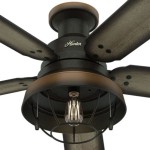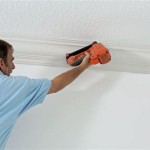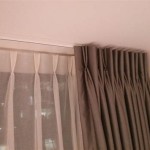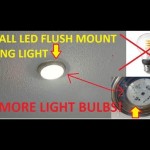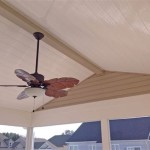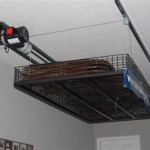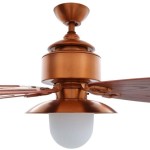How To Fix a Drop Down Ceiling: A Comprehensive Guide
Drop ceilings, also known as suspended ceilings or T-bar ceilings, are a common feature in commercial spaces, basements, and occasionally, residential houses. Their popularity stems from their ability to conceal pipes, wiring, and ductwork, while also providing easy access for maintenance and offering acoustical benefits. However, over time, drop ceilings can develop problems such as sagging, water damage, or broken tiles. Addressing these issues promptly is crucial to maintain the aesthetic appeal and structural integrity of the space. This article provides a comprehensive guide on how to fix a drop down ceiling, covering common problems and detailing the necessary steps for successful repair.
Before embarking on any repairs, a thorough inspection of the drop ceiling is essential. This involves identifying the type and extent of the damage, determining the underlying cause (e.g., water leaks, excessive weight), and assessing the condition of the grid system. A systematic approach ensures that the repairs are effective and prevent recurrence of the problem. Neglecting a comprehensive assessment can lead to superficial fixes that ultimately fail to address the root cause.
Safety is paramount when working with drop ceilings. Before starting any repair work, ensure the power supply to any electrical fixtures above the ceiling is turned off at the breaker. Wear appropriate personal protective equipment (PPE), including safety glasses, gloves, and a dust mask. If working at height, use a sturdy ladder or scaffolding and ensure it is properly positioned and secured. Always have a helper present, especially when handling heavy tiles or working in confined spaces. Adhering to these safety precautions minimizes the risk of accidents and injuries.
Addressing Sagging Drop Ceiling Tiles
Sagging ceiling tiles are a common problem, often caused by moisture absorption or excessive weight. Accumulated moisture can weaken the tile's structure, causing it to bow downwards. Similarly, placing heavy objects on top of the tiles (e.g., insulation material, debris) can exceed their load-bearing capacity, leading to sagging.
The first step in fixing sagging tiles is to identify the source of moisture. Common causes include leaking pipes, condensation, or roof leaks. Repairing the source of the leak is essential before replacing the affected tiles. If the moisture source is not addressed, the new tiles will eventually suffer the same fate.
Once the moisture source is resolved and the damaged tiles have had time to dry out completely, assess their condition. If the tiles are only slightly sagging, they may be salvageable. Reinforce the tiles by applying a thin layer of drywall compound to the back, allowing it to dry completely before reinstalling. This adds structural support and helps prevent further sagging. In some cases, adding a small amount of weight to the center of the tile while the compound dries can help it flatten out.
If the tiles are severely sagging or damaged beyond repair, replacement is necessary. Carefully remove the damaged tiles, supporting them to prevent them from falling and causing further damage. Measure the dimensions of the existing tiles to ensure you purchase the correct replacements. When installing the new tiles, ensure they are properly seated in the grid system and level with the surrounding tiles. Use a level to verify alignment and make any necessary adjustments to the grid.
For preventative measures, consider using moisture-resistant ceiling tiles in areas prone to humidity or leaks, such as bathrooms or basements. Regularly inspect the ceiling for signs of moisture or sagging and address any issues promptly. Avoid placing heavy objects on top of the ceiling tiles, and ensure proper ventilation to minimize condensation.
Repairing a Damaged Drop Ceiling Grid
The drop ceiling grid system, composed of metal T-bars and connecting clips, provides the structural support for the ceiling tiles. Damage to the grid, such as bent or broken T-bars, can compromise the entire ceiling's stability. Identifying and repairing grid damage is crucial for maintaining the ceiling's integrity.
Inspect the grid system thoroughly, looking for signs of damage such as bent or broken T-bars, loose or missing connecting clips, and corrosion. Pay particular attention to areas where the grid is supporting heavy fixtures, such as light fixtures or HVAC vents. Excessive weight can strain the grid and lead to premature failure.
If a T-bar is bent but not broken, it may be possible to straighten it using pliers or a metal straightener. However, if the T-bar is severely bent or broken, replacement is necessary. Purchase a replacement T-bar that matches the dimensions and profile of the existing grid system. Carefully remove the damaged T-bar, disconnecting it from the surrounding grid components. Install the new T-bar, ensuring it is securely connected and properly aligned.
Connecting clips are responsible for holding the T-bars together and maintaining the grid's structural integrity. If clips are loose or missing, the grid can become unstable. Replace any missing or damaged clips with new ones, ensuring they are properly installed and securely fastened. It is important to use the correct type of clip for the specific grid system.
Corrosion can weaken the metal components of the grid and lead to premature failure. If corrosion is present, clean the affected areas with a wire brush and apply a rust-inhibiting primer before repainting. In severe cases, replacement of the corroded components may be necessary. Using corrosion-resistant materials, such as galvanized steel or aluminum, can prevent future corrosion problems.
To prevent grid damage, avoid placing excessive weight on the grid system. When installing light fixtures or other heavy objects, ensure they are properly supported by independent supports that are attached to the building structure, rather than relying solely on the grid. Regularly inspect the grid for signs of damage and address any issues promptly.
Addressing Water Damage and Stains
Water damage is a common problem in drop ceilings, often resulting from leaks in the roof, plumbing, or HVAC systems. Water stains can be unsightly and indicate underlying moisture problems. Addressing water damage promptly is crucial to prevent mold growth and further deterioration of the ceiling.
Identify and repair the source of the water leak before addressing the stains or damage. Common sources of leaks include roof leaks, plumbing leaks, and condensation. Repairing the leak is essential before proceeding with any other repairs. Ignoring the source of the leak will only lead to recurring problems.
Once the leak is repaired and the affected area has had time to dry completely, assess the extent of the water damage. If the water stains are superficial, they may be removable with a mild detergent solution and a soft cloth. Gently wipe the stained area, avoiding excessive pressure or scrubbing, which can damage the tile. Test the cleaning solution on an inconspicuous area of the tile first to ensure it does not cause discoloration or damage.
If the water stains are persistent or the tiles are severely damaged, replacement is necessary. Remove the damaged tiles carefully, supporting them to prevent them from falling. Ensure the area above the ceiling is dry and free of mold or mildew before installing new tiles. If mold or mildew is present, treat the area with a mold-killing solution and allow it to dry completely before proceeding.
To prevent water damage, regularly inspect the roof, plumbing, and HVAC systems for leaks. Ensure proper ventilation to minimize condensation. Consider using moisture-resistant ceiling tiles in areas prone to humidity or leaks. Address any water stains or signs of water damage promptly to prevent further deterioration.
When replacing water-damaged tiles, consider using tiles with a mold-resistant coating. These tiles are designed to inhibit mold growth and provide added protection against water damage. They are particularly useful in areas prone to humidity or leaks.
Regular maintenance, including cleaning and inspection, is essential for maintaining the appearance and structural integrity of a drop down ceiling. By addressing minor issues promptly, more extensive and costly repairs can be avoided. This comprehensive guide provides the information needed to effectively fix and maintain a drop down ceiling, ensuring its longevity and functionality.

A Drop Ceiling That Looks Better Than Drywall How To Install In Basement Diy

Easy Way To Update A Drop Ceiling Sprucing Up Mamahood

How To Replace A Drop Ceiling The Lilypad Cottage

Drop Ceiling Removal And Renovation Full Rehab Part2

How To Install A Drop Ceiling 14 Steps With Pictures Wikihow

Completely Cover A Drop Ceiling Ceilings Armstrong Residential

How To Install A Suspended Or Drop Ceiling

How To Install A Drop Ceiling In Bathroom Diy Installation With Pvc Tiles

Finishing Basement 11 Diy Accessible Ceiling Drop Idea Easy Fast Looks Great

How To Install A Drop Ceiling 14 Steps With Pictures Wikihow
Related Posts

